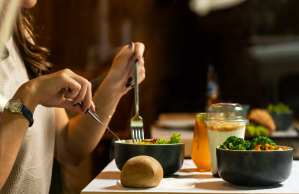
- Pica disorder is a condition that causes compulsive consumption of inedible, potentially toxic objects and substances.
- Pica disorder often affects young children but can affect people of any age.
- People with pica disorder may consume chalk, cleaning chemicals, soil, clay, coins, string, and more.
- Two of the most commonly identified root causes of pica disorder include malnutrition and adverse childhood experiences (trauma), among others.
- Pica disorder is treatable but is considered a serious condition because of the potential side effects of consuming poisonous substances, which can result in long-term damage to the brain and body.
- Pica is often treated using a multi-disciplinary approach. This means clients with pica disorder will typically work with a behavioral therapist, alongside a psychiatric provider for the best results.
Pica is an eating disorder in which someone suffers from the recurring urge to eat non-food items. Many of these compulsive cravings involve harmless items, but in some cases, pica disorder can cause fatal reactions to poisonous objects and substances that someone eats. Adults may be aware of the risks associated with what they’re eating, but may still be unable to stop.
Despite the dangers involved with this condition, pica disorder is treatable with help from either a therapist who specializes in eating disorders and/or a psychiatric provider—both of whom will help treat the underlying causes behind someone’s compulsion to eat non-food items.
What Is the Main Cause of Pica?
While there are a myriad of things that can cause pica, the main cause is usually a very high level of stress or anxiety. The extreme level of distress is usually caused by long-term disruptions or disturbances in the environment of the person being affected. The situation affecting the individual with pica disorder is typically beyond their coping skills, and PTSD and complex trauma from someone’s past may prompt an adult to develop pica.
Typically, children with nutritional deficiencies or developmental concerns are most affected — and the behavior is likely to continue until a parent or guardian observes and intervenes. However, normal teething behavior and the curiosity that toddlers and young school children display when eating inedible objects is not pica disorder.
Factors that may be root causes of pica disorder are usually categorized as prolonged traumatic stressors, and may occur to individuals of any age. Adults may be less likely to report symptoms of pica disorder out of shame.
Is Pica Disorder a Dangerous Condition?
It is. The non-edible items that people suffering from pica can contain hazardous chemicals that the human body is not designed to process.
The danger is that once these items are eaten (especially in children who don’t know the dangers of eating non-food items), it’s not readily known that the person has consumed something toxic until physical symptoms and other complications develop. If the individual is incapacitated or doesn’t communicate verbally, immediate medical attention is usually necessary to determine the cause of their symptoms.
Is Pica Disorder a Serious Condition?
Pica disorder is serious and may not resolve on its own. It can have potentially fatal consequences if someone is left unsupervised before their treatment (therapy and/or psychiatric care) starts working or begins. This is because, as mentioned before, pica disorder involves compulsively ingesting non-food items that may be toxic.
Objects or materials that are often consumed by individuals with pica disorder include:
-
- Chalk
- Dirt
- Clay
- Tacks
- Clothing
- Hair
- Fur
- Coins
- Lint
- Light bulbs
- Metal shavings
- Batteries
- Insects
- Cleaning fluids
- Industrial lubricants like WD-40
- And many other substances
Pica is considered dangerous because the consumption of even just one item can cause potential blockages, obstructions, and perforations, or poisoning of the digestive system.
But individuals that have pica disorder for long periods of time, such as those who consume dirt, clay, or lint (substances that may be non-toxic but aren’t meant to be consumed), still run the risk of the above injuries, as well as:
- Chronic malnutrition
- Emotional trauma
- Damage to the nervous system
- Dental damage
- And other long-term injuries to the body and mind
Can Pica Disorder Be Fatal?
Yes, pica disorder can absolutely be fatal. What makes pica so severe is that even one ingestion of a potentially harmful substance can lead to life-threatening consequences, as detailed above due to but not limited to the above physical conditions.
When Should I Be Concerned About Pica?
Pica disorder should be addressed immediately, even if it is deemed to be an isolated incident. If someone of any age consumes a non-food item, particularly if it’s a household cleaner or chemical substance, or something large like a coin that can cause airway or digestive instructions, they need to receive immediate medical attention.
Afterward, when they’ve been determined to be stable, action should be taken by the individual or their loved ones (particularly in the case of children and minors) to identify and diagnose any stressors or triggers through psychological and psychiatric treatment.
What Happens If Pica Goes Untreated?
If pica goes untreated, it can cause serious medical issues and mental health concerns. It can cause significant impairment in social, vocational, relational, and emotional functioning daily and can impair the person’s ability to fully engage in these roles.
Pica disorder is completely curable in many cases, but a mental health professional should be consulted for assistance. Talk to a provider who specializes in eating disorders. Below are a few of the most successful and commonly deployed treatment methods for people with pica disorder.
With proper consultations with physician, licensed mental health professionals, and other healthcare team members, prognosis for recovery is good.
How Do I Cure Pica Disorder? Options for Pica Disorder Treatment
Pica disorder is treated using a multi-disciplinary approach. This means the individual will typically receive lab and blood testing from a doctor, as well as a physical exam to rule out or identify any biological or somatic causes for the disorder like malnutrition that aren’t mental health-related.
In psychotherapy treatment for pica disorder, therapists usually use behavior modification and cognitive behavioral therapy (CBT) to identify, replace, and control eating-related urges and behaviors. A psychiatric provider may also help to make sure the individual with pica disorder is able to feed themselves properly with the aid of a prescription medication that helps suppress and eliminate compulsions caused by anxiety, depression, or another condition.
With proper consultations with licensed mental health professionals, and other healthcare providers, the prognosis for recovery is optimistic. Equally important is the support of family and friends who can ensure the individual stays committed to eliminating the urges caused by pica disorder.











